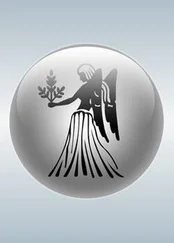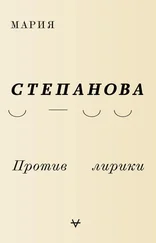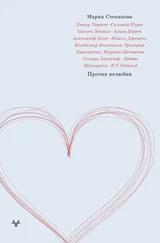Since I myself needed a year to discover the significance of this strange work, many of the texts and tunes, particularly in the first paintings, elude my memory and must — like the creation as a whole so it seems to me — remain shrouded in darkness.
The high register, quickly supplanted by mocking tongue twisters and the many-voiced dialogues interrupting the authorial voice all make perfect sense if we think of it as theater, with the opening sheet as the cover of program notes or a play text, with curly scripts and theatrical flourishes and a cast list. Just like traditional theater, the Prologue and Epilogue come out center stage to deliver their explanations and warnings. Yet Life? Or Theater? doesn’t unfold neatly like a play. Nor is it a guide to be slipped in a pocket — it is so big you can barely pick it up. To read it from beginning to end would be a real undertaking, requiring both time and willpower.
It is also extraordinarily hard to exhibit the work properly, and not only because of the vast space you would need to do it thoughtfully, in narrative order. The images themselves seem to demand more — they want to be a book, the pages interleaved with transparent overlay so the text interacts with the image showing through, and we can lift the curtain and look at the naked image beneath, without its veil of text. There is a complex balance between the out-of-frame voice of the handwritten text (which changes color for certain key words and phrases, sometimes several times on a page) and the live transmission of the reportage-style images: this balance doesn’t just suggest a rhythm for reading/looking, it insists on one. What we see needs to be treated like “temporary art,” in the same category as cinema or opera. To do this through museum exhibition seems impossible — the full work is never on display and so the very first graphic novel never looks anything more than a series of talented sketches.
In the Amsterdam Jewish Cultural Quarter, where the Salomon archive is kept, there is a single case where (of 1300 gouaches) a mere eight pages are displayed. The work is damaged by exposure to light, so the display is limited and continuously changed. Displaying them in book form would be even more damaging, as it is said every single touch would cause irreparable damage. Life? Or Theater? has become something like holy writ — never seen, known only by reproduction and hearsay. It can be quoted or interpreted or called upon, but never just read in the order intended.
About her work, Salomon wrote:
The creation of the following paintings is to be imagined as follows: a person is sitting beside the sea. He is painting. A tune suddenly enters his mind. As he starts to hum it, he notices that the tune exactly matches what he is trying to commit to paper. A text forms in his head, and he starts to sing the tune, with his own words, over and over again in a loud voice until the painting seems complete. Frequently, several texts take shape, and the result is a duet, or it even happens that each character has to sing a different text, resulting in a chorus. […] The author has tried — as is apparent perhaps most clearly in the Main Section — to go completely out of herself and to allow the characters to sing or speak in their own voices. In order to achieve this, many artistic values had to be renounced, but I hope that, in view of the soul-penetrating nature of the work, this will be forgiven.
*
“Soul-penetrating” is a sly self-ironizing, but when we consider Life? Or Theater ? it isn’t really an overexaggeration, more of a diagnosis. The narrative has all the qualities of sensationalist fiction: it can’t be put down, it breathes fire and frost. The narrator, named simply “the author,” lays before the reader a story that spans generations, includes eight suicides, two wars, several love stories, and the victorious onslaught of Nazism. Anyone who knows that it closely follows the real history of Charlotte’s family (and there’s a long tradition of understanding the “three-colored singspiel” as a purely autobiographical work), also knows how the story ends. In September 1943 the Nazis conducted what they called the “cleansing of Jews” in the Côte d’Azur — the efforts of Vichy France seemed to them, and probably were, lacking in assiduousness, and tens of thousands of refugees were quietly minding their own business down by the Mediterranean. By then the rhetoric of Jews as insects, bedbugs, cockroaches, as constant as the sound of running water, had hardened to become perceived reality, and it was time to “take back control.” A man called Alois Brunner was put in charge of the operation and it was effective: a villa owned by an American woman in Villefranche-sur-Mer was one of many “decontaminated.” The villa was called L’Ermitage and a Jewish couple lived there pretty openly: Charlotte and her husband of only a few months. They were taken at night, their neighbors heard screams. On October 10, a freight transport (with x number of freight “units,” as they wrote in the consignment notes) arrived at Auschwitz. On the same day, just arrived, twenty-six-year-old Charlotte Salomon was put into a group destined for immediate destruction. This was unusual: a young woman, full of energy and able to draw as well, had an increased chance of surviving longer. But Charlotte was visibly pregnant. Clearly that decided her fate.
The horror reflex, the onrush of pity when we face such information is overwhelming, it shapes our understanding: a long history of critical inertia mean that we see in Salomon’s work the spontaneous (and artless, in the face of her silence) expression of a pure heart. Any story of a victim is doomed to be emblematic — an arrow pointing toward a collective fate, a collective death. Charlotte Salomon’s life story tends to be thought of as typical: the result of layers, one forming on top of another, of political and cultural conditions, of terrible and immutable patterns. But it was against all of this that she rebelled, and I think she felt herself to be victorious. Life? Or Theater? isn’t the witnessing of a victory, but the victory itself, the battlefield, the captured castle, and a declaration of intent on 769 sheets of paper. All the same, it is often treated not as an object, but as material (as raw material from which fragments can be taken, and the excess discarded), and not as an artistic achievement but as an act of witnessing (which can be used in different generalizing contexts), not as a result but as an unfulfilled promise — a human document, in short. This interpretation could not be further from the truth.
Almost everyone writing about Charlotte in the last few years has cautioned against the obvious danger of seeing the work as an account of death told by a victim. This singspiel in pictures, written on the Côte d’Azur just before the world ended, is not a tale of the Holocaust (although unlike its author it has, against the odds, become a survivor). But it takes special effort from the viewer to stand in front of these works and simultaneously remember and forget, to know and not to know about Auschwitz at the end of the tunnel. The pages of Life? Or Theater? are overlaid with tracing paper and through it we see the image, but at any moment we can remove this filter to find ourselves alone with pure color.
In the summer of 1941 Charlotte Salomon had a stroke of luck that overwhelmed her and made her life feel charmed: rounded up and imprisoned, she was one of very few who were released and managed to escape disaster and death. In her text, alongside the initial “The action takes place in 1913–1940 in Germany and later in Nice, France,” she writes “Or between heaven and earth beyond our era in the year I of the new salvation.” So Noah might have described himself with his sons, or Lot’s daughters, and that is how Charlotte saw herself and her situation: the known world had ended, together with everyone she had loved or hated. They had died, disappeared, or been dispersed to other places. She was much like the first person in a new world, the recipient of unexpected and indescribable largesse — she had been given a renewed and redeemed world: “Foam, dreams — my dreams on a blue surface. What makes you shape and reshape yourselves so brightly from so much pain and suffering? Who gave you the right? Dream, speak to me — whose lackey are you? Why are you rescuing me?”
Читать дальше











